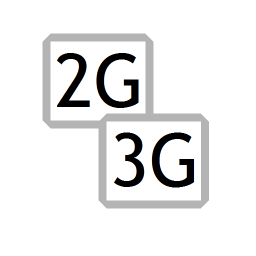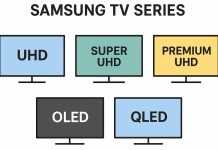In the technical specifications of phones, tablets, you can find what mobile networks the device supports, for example, support for 2G, 3G, 4G, and, more recently, 5G. If you are interested, I will briefly and very simply tell you the difference between these mobile communication standards.
2G standard mobile communications
2G is traditional mobile telephony, SMS and the ability to use the phone as a low speed modem to connect to the Internet. It was the first mass digital standard for mobile communications. It replaced analog traditional systems. 2G allows you to make phone calls, send text messages and access the Internet, but it is very slow, you can only browse the Web. The speed is insufficient for video transmission, so you will not be able to watch Youtube and other streaming services.
3G cell phone standard
3G is a standard that came after 2G, mostly operating on different frequencies than 2G. In most countries 3G was introduced as a complement to 2G. Thanks to the appearance of 3G standard it became possible to make video calls and get high-speed Internet connection (depending on the equipment used by the operator, you can theoretically get access speed of about 7.5 Mbit/sec. But in practice, the speed of the Internet is about 2-4 Mbit per second. Internet speeds were not enough for a stable video transmission. But in most cases it was more or less possible to use streaming services.
4G mobile communications standard
4G is a standard based solely on the transmission of information. If a call is made over 4G, it is converted into packets and added to the packets of information transmitted over the Internet. The reason for creating this standard was the need for fast transmission of information over the Internet. According to 4G specification, the standard supports speeds of 40 Mbit/s or 100 Mbit/s depending on the type of equipment and the bandwidth capacity of the channel. According to many sources, in practice the speed of data transmission depends on the distance of the device from the base station, but invariably provides speeds of 4 to 30 Mbit/sec. With a 4G network, you can freely use streaming services.
5G Mobile Standard
5G is a new standard that provides Internet speeds of 1-2 Gbps. Its launch requires a very deep modernization of the existing mobile network, base stations are located 400-500 meters from each other (1300-1500 feet). In practice, only a few mobile operators, usually in highly developed countries, have begun to implement this standard. But most operators have found this standard unnecessary. The existing 4G allows to meet the needs of 98% of cell phone users. So now there is a very interesting situation, the phones support 5G, but 5G network may not be available in your country.
Mobile standard 6G
The standard is in development, but it will not be in demand in the near future. 5G has not yet been implemented, so the creation of 6G networks is in the distant future, and such speeds are not necessary for the average user. The entire limit of your mobile package can be selected in a couple of hours.






